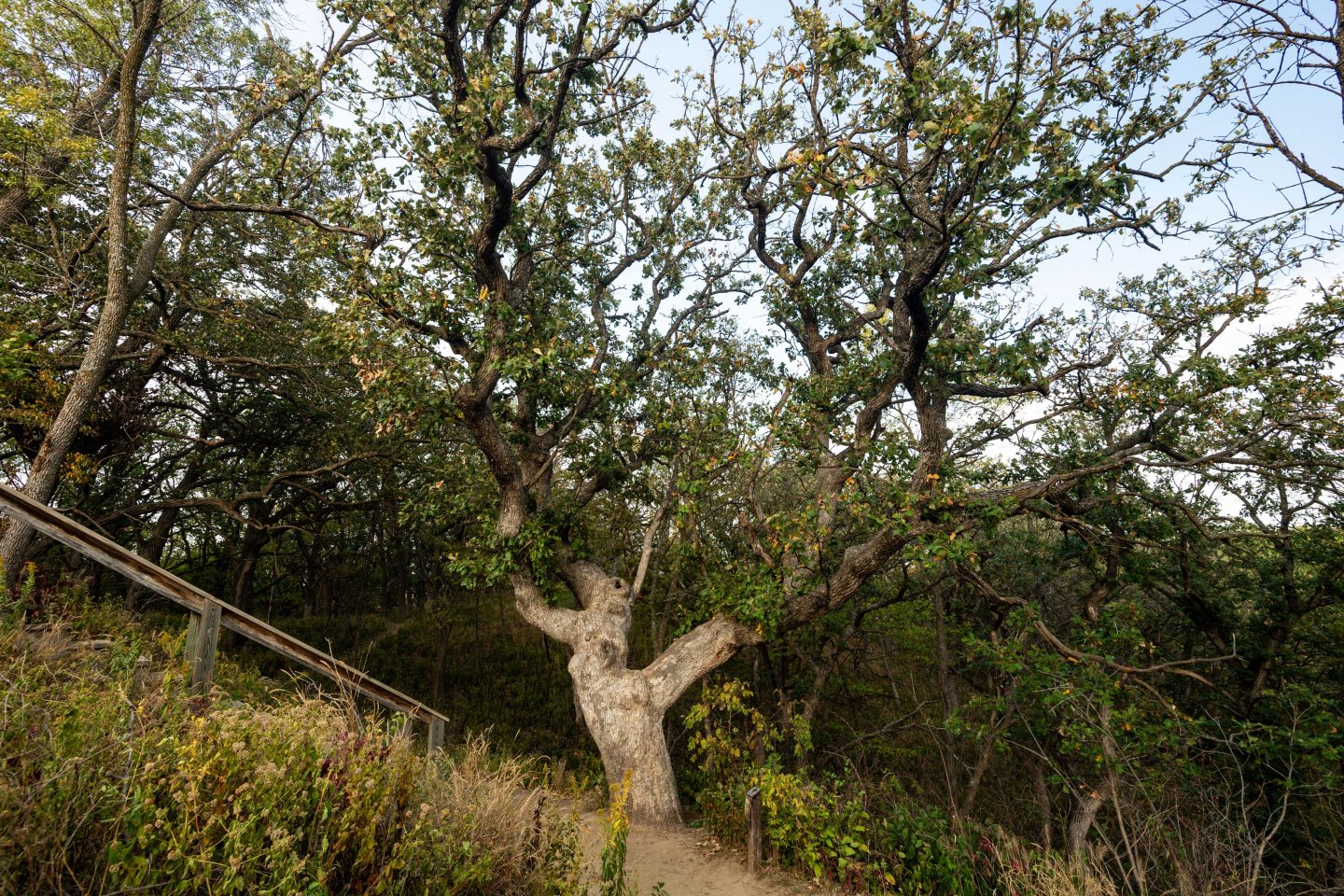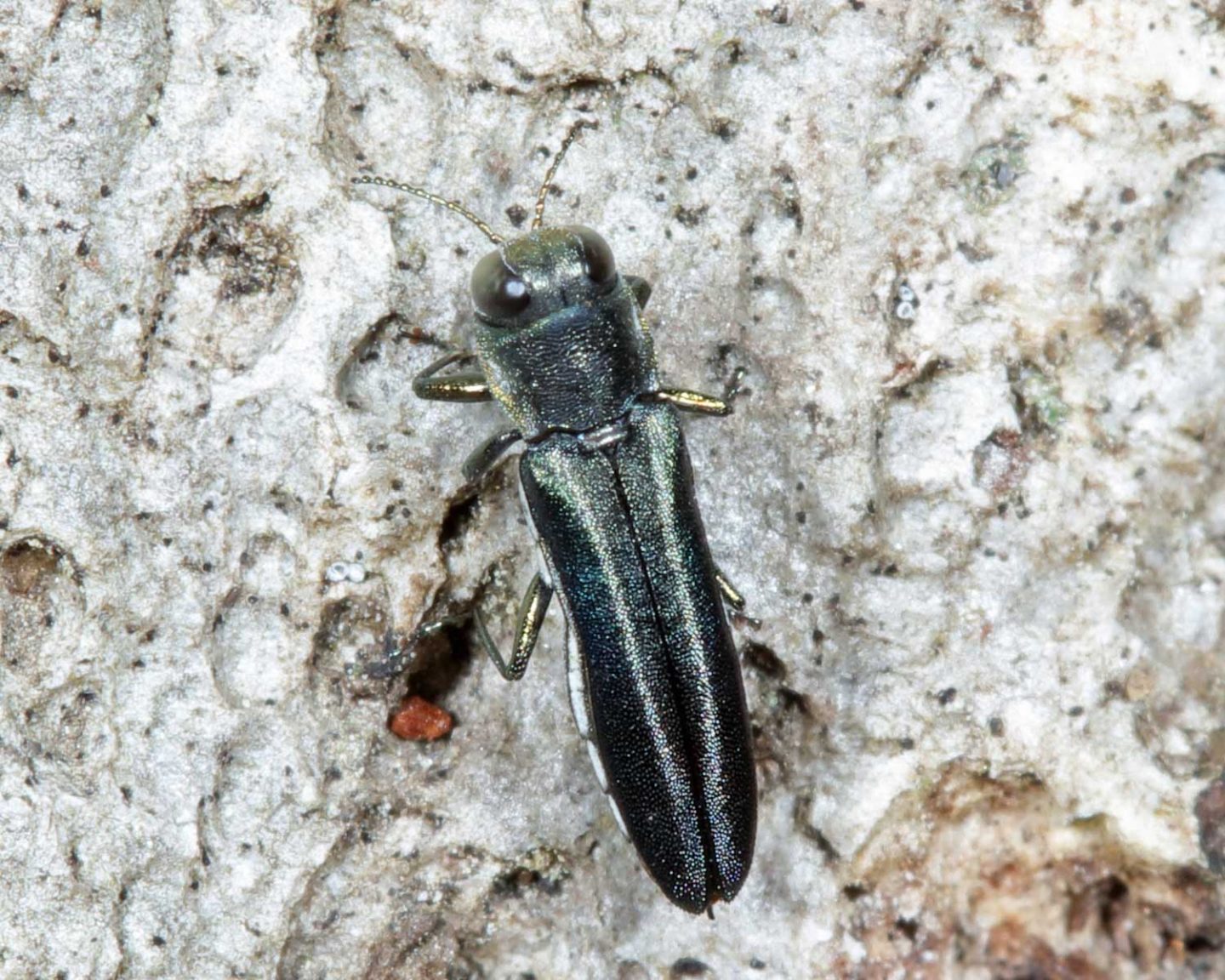
By Rich Wehmeyer, Game and Parks Horticulturist
Old Wolf Oak at Ponca State Park, one of Nebraska’s oldest trees, has died. It was a bur oak living more than 380 years and had become an often-visited woodland destination for parkgoers. But it’s not the only oak to die this year from stresses from natural causes.
Visit state parks along Nebraska’s eastern edge, and you’ll find large areas of mature trees that are dead or in decline. While trees are resilient and rarely succumb to a single stressor, Nebraska Game and Parks and its partners identified multiple ones leading to massive die-offs among the region’s deciduous trees.
The plight they face is immense, but so is the plan to save as many trees as possible and embrace renewed landscapes going forward.
The Role of Drought
The past two years have seen extreme drought conditions across Nebraska. While native species like the bur oak are drought-tolerant, they do have their limits. Prolonged drought causes dieback in the canopy and root systems, weakening the tree’s defenses. This creates an opening for pests and pathogens. When the tree’s ability to compartmentalize decay or produce biochemical defenses declines, it becomes more vulnerable to infection.
Bur Oak Blight and the Two-Lined Chestnut Borer
Before the drought, Nebraska Game and Parks Commission staff had already been monitoring and, where possible, treating bur oaks for bur oak blight (Tubakia iowensis). While this disease is unlikely to kill a tree, it weakens it, allowing other pests, like the two-lined chestnut borer, to invade. Bur oak blight primarily affects a subspecies of bur oak, Quercus macrocarpa var. oliformis, which is found in upland areas, hilltops, ridges and southwest-facing slopes — regions that have been especially stressed by the drought.

The Emergence of Hypoxylon Canker
A new threat, hypoxylon canker (Biscogniauxia atropunctata) has also emerged among drought-stricken trees. This fungus is normally benign, found on the bark of many tree species. But with tree defenses already compromised, it has invaded the vascular systems of many species. Hypoxylon canker feeds on the sapwood, cutting off the tree’s ability to transport water and nutrients. As the fungus spreads, it causes the bark to slough off, revealing a grey-white fungal mat beneath, which produces spores that can infect other nearby trees.
Once hypoxylon canker enters the vascular tissue, the tree is doomed. This disease is not species-specific; it has also been found on elms and hackberries in the same woodlands. Unfortunately, no treatments are currently available to eradicate the fungus.
Embracing Change
Though discouraging, Game and Parks sees this as an opportunity for ecological renewal. The loss of trees represents a natural reset of the ecosystem, allowing the reimagination of management strategies for these areas that have remained unchanged for so long.
After consulting with experts from states facing similar challenges, Game and Parks has developed a comprehensive response plan that includes the immediate removal and destruction of infected trees and limbs. To prevent the spread of infection, infected material must be destroyed on-site without further stressing the surrounding still-healthy trees.
Additional focus will be needed on controlling the spread of invasive species and taking advantage of the newly exposed areas of land to encourage native vegetation to grow. These efforts will include testing different management techniques — including periodic prescribed burns — to ensure a resilient, sustainable landscape in the future.
Long-Term Vision
Land managers, including Game and Parks, must approach this challenge with a blend of science and creativity. The problem cannot be eradicated swiftly, and responses will affect the broader ecosystem moving forward. Game and Parks is committed to using this setback in our deciduous forests as an opportunity for growth, both in land management practices and in the interactions with the public witnessing these changes firsthand during their ventures among the trees.
